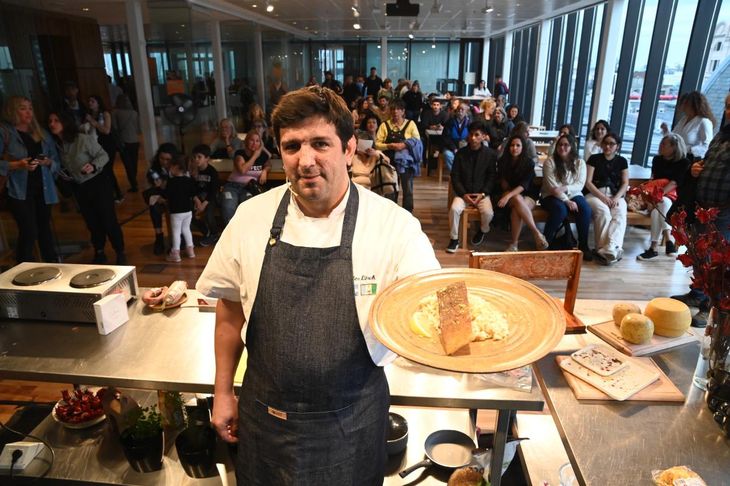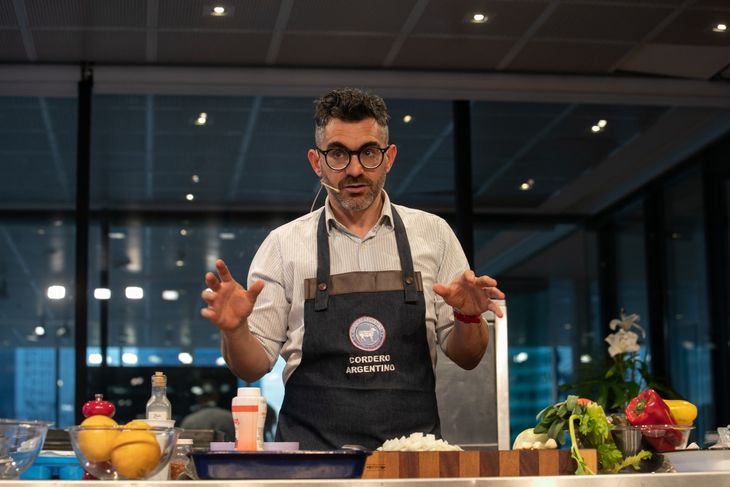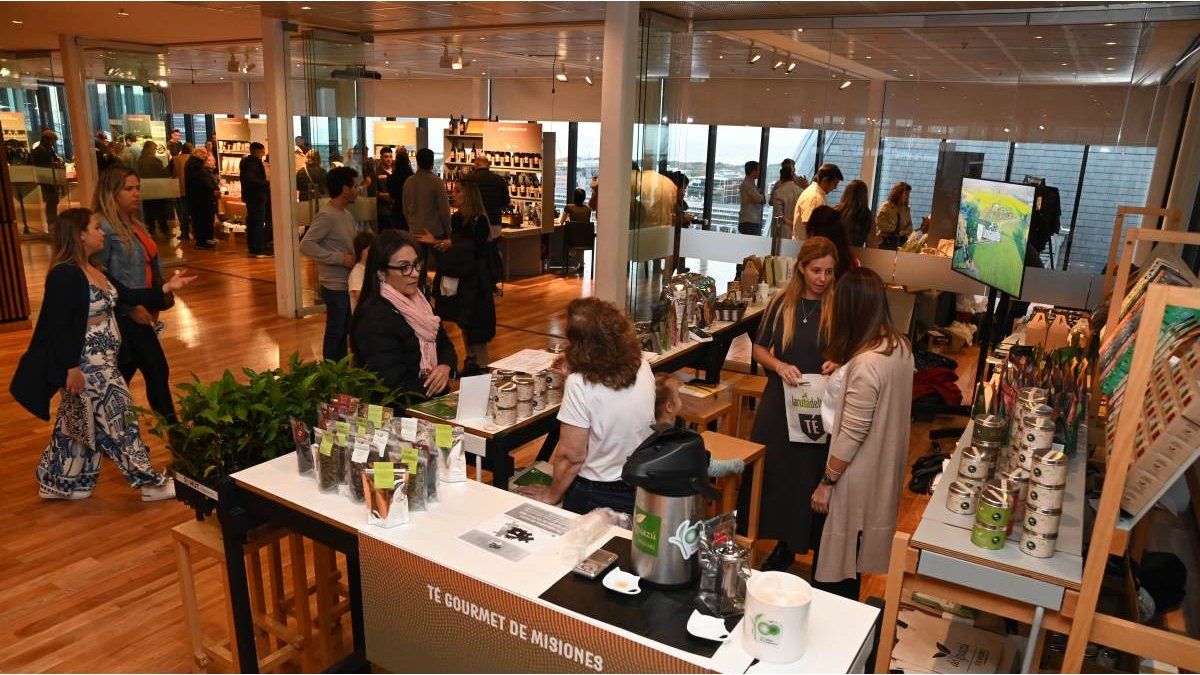“It is a source of pride to find a very important region of our country represented, such as the NEA, with a lot of local production, a lot of family work,” said the chief of staff of the Ministry of Agriculture, Livestock and Fisheries of the Nation, Juan Manuel Fernández Arocena, at the opening of the meeting and highlighted the importance of these initiatives in terms of the “promotion of culture, roots, local development and the promotion of all that wealth based on tourism and these opportunities that generate federal development.”
Lucrecia Cardoso, Secretary of Cultural Development of the Ministry of Culture of the Nation 2.JPG
open kitchen
For her part, the Secretary of Tourism Promotion of the Ministry of Tourism and Sports of the Nation, Yanina Martínez, was also present and commented: “The Open Kitchens seek to exalt the work of producers and chefs from all regions of the country . They value the articulation between gastronomy, local production and tourist destinations, showing the traceability of the production chain from the countryside, rivers and oceans to the table”. Romina Sorrentino, Director of Strategic Tourism Promotion, was also representing this ministry.
Finally, Lucrecia Cardoso, Secretary of Cultural Development of the Ministry of Culture of the Nation, expressed that “gastronomy, which the Ministry of Culture considers a cultural industry, produces a lot of production and work. Each one of the products speaks of our identity, of our history as a nation”.
cck_kirchner_panoramica_1200_dia.jpg

The kitchens
Each of the three days, the Cocina space was filled with aromas and flavors that made the public travel through some of the towns and cities that make up the Northeast. Chef Carlos Lösch, known as the Chaqueño Ambassador, surprised with a lemon pacú risotto, highlighting the added value at origin of this typical river fish. “Whenever I travel I try to get all the Chaco producers to come in my suitcase and to be able to show a little of each one, to be able to tour the province through the flavors,” he said.
Serrano lamb was the main product chosen by chef Juan Braceli who, supporting the Argentine Lamb National Campaign, prepared it with vegetables (tomato, pepper and eggplant). “Cooking with local products is a responsibility and permanent learning. The number of producers and producers that exist, and the added value that many of these products have is enormous. It is not only to transmit the recipe but to know what is being done”, expressed Braceli for whom “each ingredient takes you to a province, to a region. Gastrotourism in Argentina is becoming more and more established”.
Carlos Lösch.JPG

open kitchen
His recipe had the particularity of being accompanied by the presentation of Cabaña La Armonía, the sheep breeding venture that Gabriel Montiel and his family have had for 15 years in San José, in the south of the province of Misiones. “We do all the traceability, from the breeding, the refrigerator and until it reaches the consumer’s plate. We have a mono-meat restaurant, which means that we only sell options with ovine meat: lamb at stake, in sauces, milanesas, steaks, meatballs, empanadas, pizzas, meatloaf. The concept is that we serve on the plate what we produce in the field, ”he explained to the public that he was able to taste smoked lamb chorizos.
The stoves were also lit with Madame Papin who, as part of SAGYP’s “Eat Fish” National Campaign, cooked surubí ravioli and fish chipas, and with Chaco chef Guillermo Perosio from the FEHGRA Brigade who made cassava and ricotta gnocchi fresh, creamy cabutia scented with saffron and crunchy Mbeju. The province of Formosa was represented by chef Ramón Torres who prepared mbeyu tacos with braised goat from Formosa accompanied by bell peppers and onions with garlic lactonesa.
Juan Braceli.jpg

open kitchen
The provincial kitchen of Entre Ríos was in charge of Valentín D’Affarra and Cecilia Pérez who cooked sirloin steak with sweet potatoes-carrots plus Yatay sauce and a croissant pudding with Yatay jelly. While Nahuel Delgado offered a tasting of typical preparations from Misiones: manioc chip with ticue-í with avocado salad, kiveve with herb sago on crispy sweet potato, mushroom ceviche with chicory and for dessert mascabo crumble with yaboticaba, kumquats and suckling pig in cane jelly syrup.
The producers
During the three days of the Northeast Region Open Kitchen, the ingredients, wineries, meals and typical products of Entre Ríos, Corrientes, Misiones, Formosa and Chaco were represented by more than 30 brands. At each stand, visitors were not only able to taste and buy, but also had the opportunity to talk with entrepreneurs and producers to learn about the origin and history behind each of these products.
Thus, the Federation of Beekeeping Cooperatives (FECOAPI) presented a wide variety of honeys, “each one corresponds to a different flowering that gives it a particular flavor determined by the botanical origin from which the bee collected the nectar,” explained Jacobo Soria. In the case of the NEA, those of orange, eucalyptus, mountain and Paraná jungle stand out.
cck.webp

Kirchner Cultural Center.
indie today
In the drinks category, bartender Matías Visconti presented his Kumquat aperitif, a fusion of traditions of Italian immigrants and natives from Entre Ríos, made from kumquats “which is a production that is being lost in the province due to its low consumption,” he says. the creator of Cantinero entrerriano, a cocktail project that works with a network of more than 100 local producers to enhance its value. Among the drinks, the presence of the Association of Wine Growers of Entre Ríos (AVER) was added with wines of different strains and blends from six wineries.
The artisanal cheeses of Entre Ríos were present with the Cisneros Suárez de Nogoyá family enterprise, which produces fresh and flavored Sardinian cheeses in its own dairy with 15 cows. From the same province, Juan Andrés Rubatino came to Cocina Abierta, to publicize Victoria’s cured Rubatti, his preparation of coarsely chopped salami, bondiolas, raw ham, pork cheese and white blood sausage.
In the case of Chaco, the Trust Fund brought ceramic and palm handicrafts, gastronomy, and textiles from different local entrepreneurs. The Ramitos crocantes enterprise from Chaco also presented its preparation of gluten-free fried and salty cassava and sweet potato snacks.
The productive diversity of the NEA was completed with wines from the Entre Ríos Wine Association, missionary yerba mate, alfajores, orange peels and stuffed hibiscus, teas, among other products. Some of them were also part of the talks that were given on, for example, the 100 years of Argentine Tea or the production of tropical fruits by the El Mortero Establishment in Misiones, and El Parque de Corrientes.
During the three days the public was able to approach a complete menu characteristic of the northeast: stuffed mestizo mbeju, vorí-vorí, chipa, empanadas from Chaco, rice pudding, quince or sweet potato cakes, and pasta frola, by the El Hormiguero Cooperative .
Source: Ambito
I am an author and journalist who has worked in the entertainment industry for over a decade. I currently work as a news editor at a major news website, and my focus is on covering the latest trends in entertainment. I also write occasional pieces for other outlets, and have authored two books about the entertainment industry.




